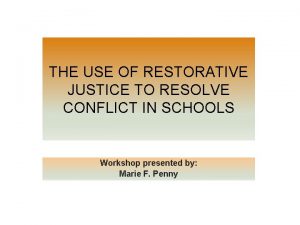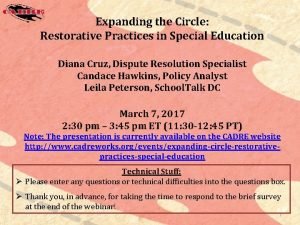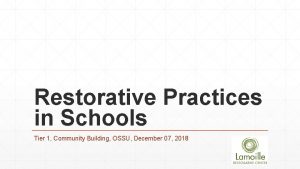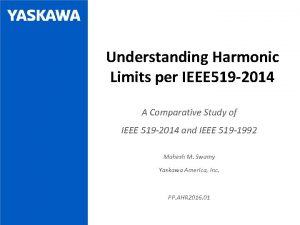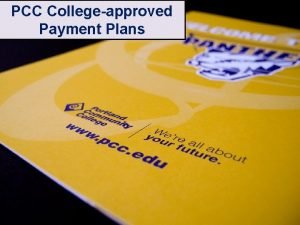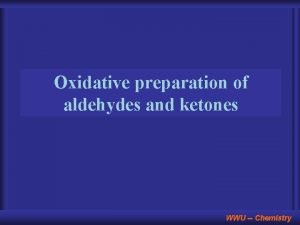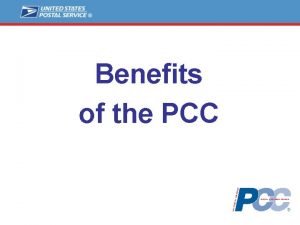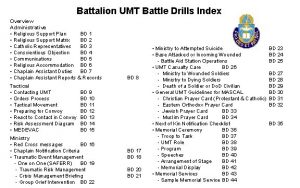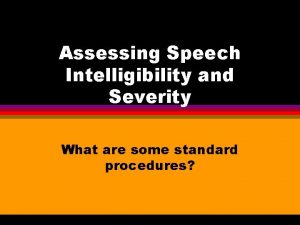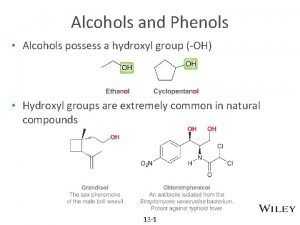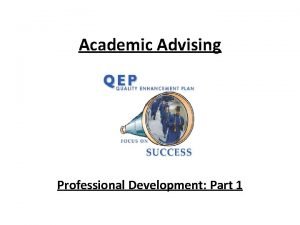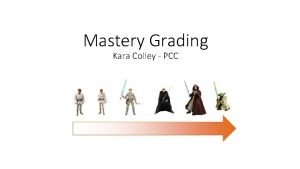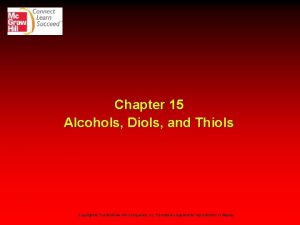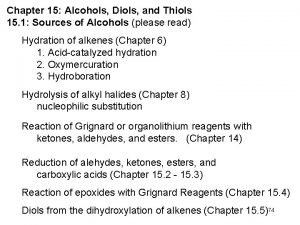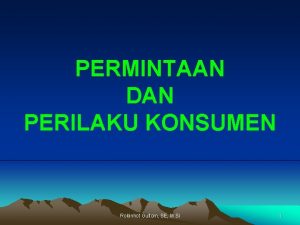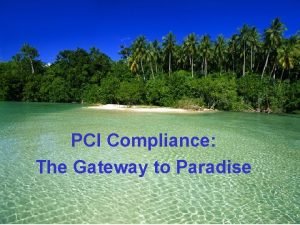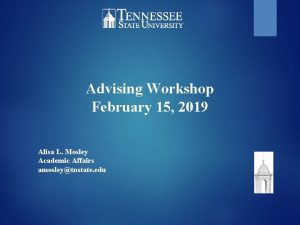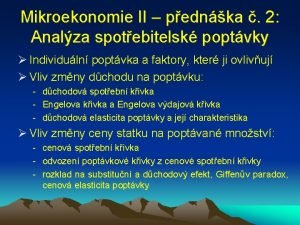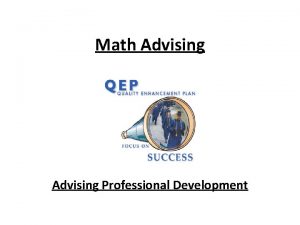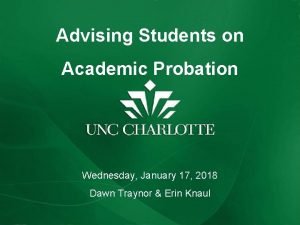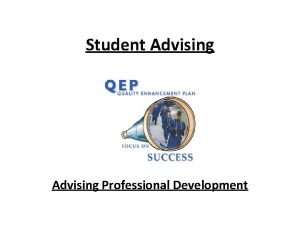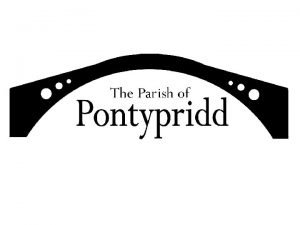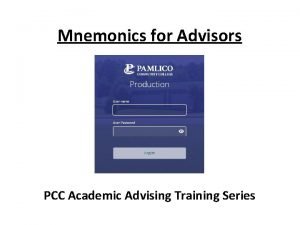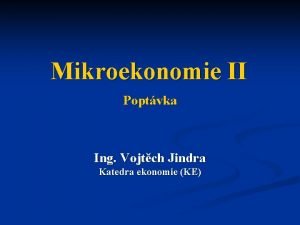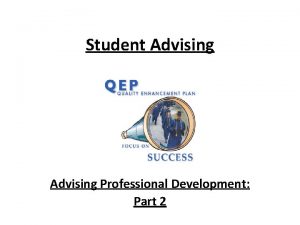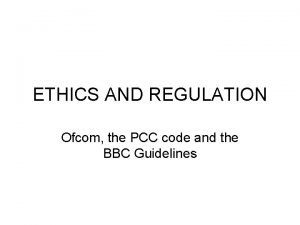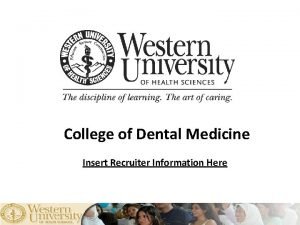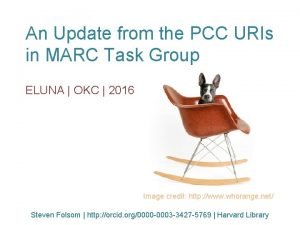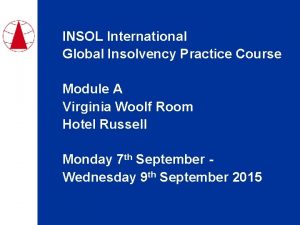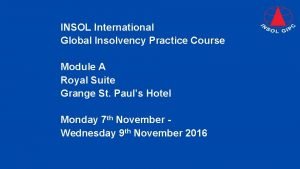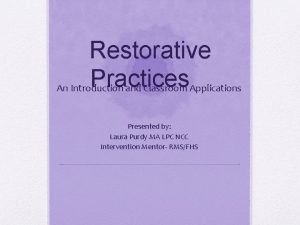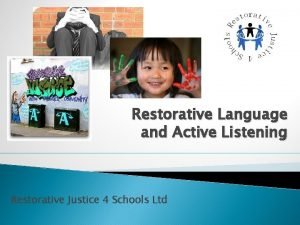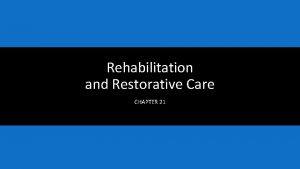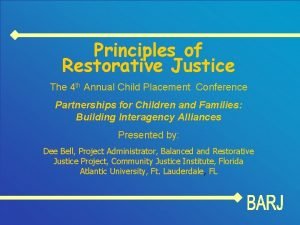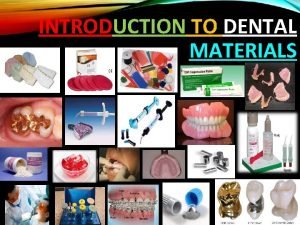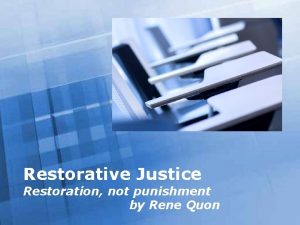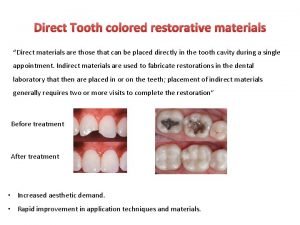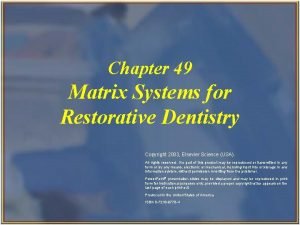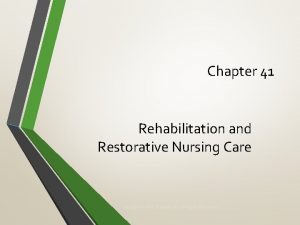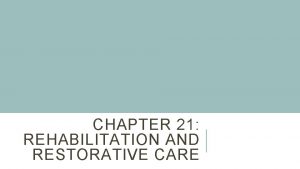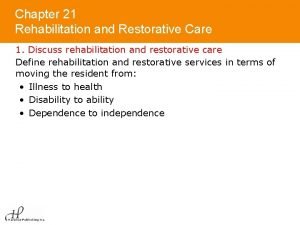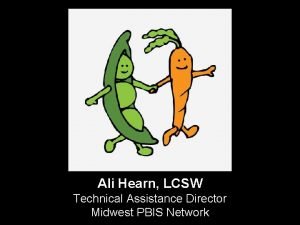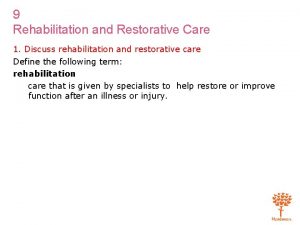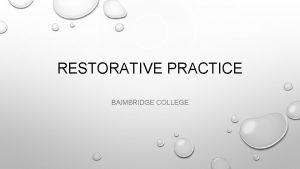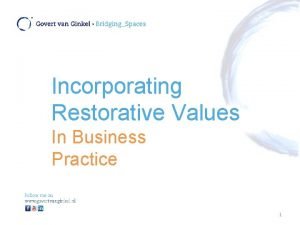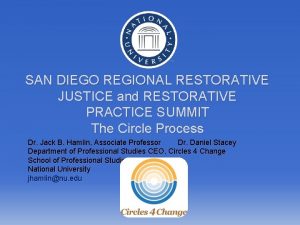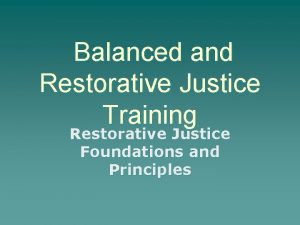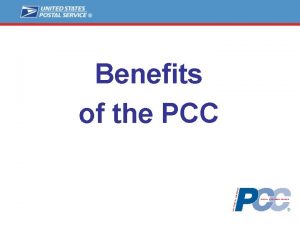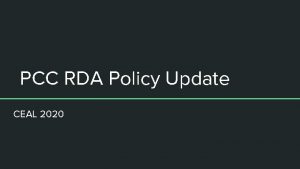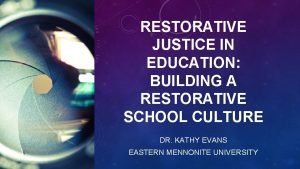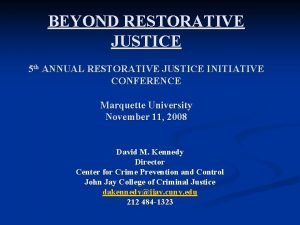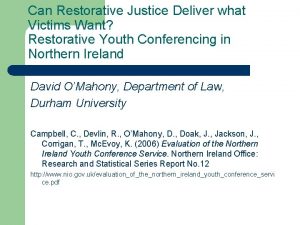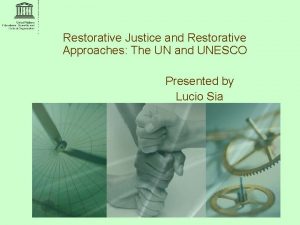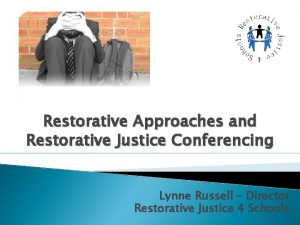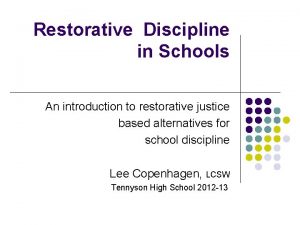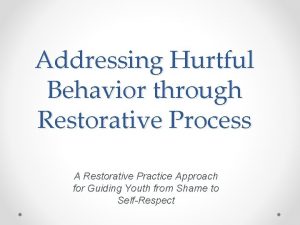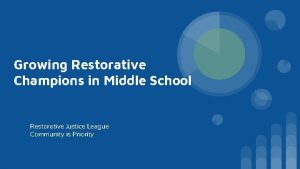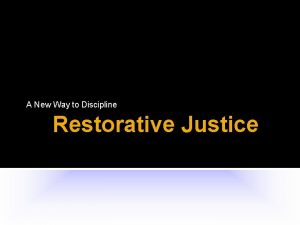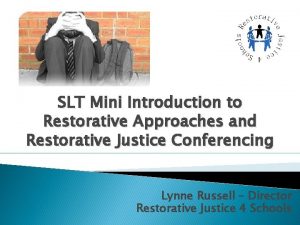Restorative Practice Training 2 day course PCC HS























































- Slides: 55

Restorative Practice Training 2 day course PCC/ HS 2017 1

Learning outcomes • Describe principles and key concepts of restorative practice • Be able to model restorative conversations and techniques • Be able to facilitate a restorative meeting PCC/ HS 2017 2

What is restorative practice? Group exercise PCC/ HS 2017 3

Restorative approaches • Restorative practices bring those harmed and those responsible for the harm into communication enabling everyone affected by the incident or issue to play a part on repairing the harm and finding a positive way forward. • Restorative approaches can work across the children and families system from early help to child protection. PCC/ HS 2017 4

The use of restorative practice helps to: • Repair harm • Restore relationships • Improve human behaviour PCC/ HS 2017 5

Why are we doing it? • International and national research – working ‘with’ and relationship based approaches • Explicit framework for practice and cultural mind set across all agencies • Improve quality of work with children and parents which focuses on them as the change agents • Improve quality of safety planning – focusing on harm, affect and strengths PCC/ HS 2017 6

National research • Leeds – reduction in Child Protection Plans/ reduction in LAC/ good Ofsted rating • West Berkshire – reduction in Child Protection Plans/ use of Tier 4 mental health placements • Hull – reduced school exclusions/ increased attainment/ outstanding schools • Wokingham – better attendance and attainment/ less exclusions PCC/ HS 2017 7

Key concepts • Social discipline window • Fair process • Free expression of emotions (compass of shame) • Restorative continuum • Restorative questions PCC/ HS 2017 8

The Social Discipline Window HIGH To punitive Control/ challenge (Limit Setting Discipline) (Mc. Cold and Wachtel) neglectful With restorative permissive Not LOW For Support HIGH (Encouragement, Nurture) PCC/ HS 2017 9

Fair process demonstrates the restorative ‘WITH’ domain of the social discipline window. “The essence of restorative practices is disarmingly simple: that human beings are happier, more productive and more likely to make positive changes in their behaviour when those in positions of authority do things with them, rather than to them or for them. ” adapted from Wachtel 2004 http: //www. restorativeschools. org. nz/ PCC/ HS 2017 10

Restorative practice is about working ‘with’ others at every opportunity, in a way that sets clear boundaries and holds people to account (high challenge) as well as providing the support and encouragement for those challenges to be met (high support). PCC/ HS 2017 11

Fair Process The central idea of fair process is that ‘…individuals are most likely to trust and cooperate freely with systems – whether they themselves win or lose by those systems – when fair process is observed’. (Kim and Muadorgne, 2003). PCC/ HS 2017 12

Fair process • Engagement – involving individuals in decisions that affect them by listening to their views and genuinely taking their opinions into account • Explanation – explaining the reasoning behind a decision to everyone who has been involved and affected by it • Expectation clarity – making sure that everyone understands a decision and what is expected of them in the future PCC/ HS 2017 13

Principles of restorative practice • • Respect Neutrality (blame free) Accessibility Restoring Safety Voluntary Empowering Harm focused PCC/ HS 2017 14

Group exercise Think about the principles: what would we see hear and observe? How do we know we are ’doing’ them? PCC/ HS 2017 15

Freedom of expression of emotions By encouraging people to express their feelings, restorative practice builds better relationships. PCC/ HS 2017 16

PCC/ HS 2017 17

Sources of Conflict Identity Boundaries The image we have of ourselves affects us more than reality. People often try to find identity in: People, Power, Position, Possessions If one of these 4 “P’s” is taken away, damaged, challenged or diminished, it touches the very core of the individual’s identity especially if self esteem is low. 18

Unique stories Restorative question: what happened? Everyone has their own unique perspective on a given situation and needs an opportunity to express this in order to feel respected, valued and listened to. PCC/ HS 2017 19

Thoughts and feelings Restorative question: what were you thinking? What were you feeling? What people think at any given moment influences how they are feeling at that time and informs how they behave. PCC/ HS 2017 20

Harm and affect Restorative question: who has been affected and how? When there are conflicts then harm can result in terms of anger, frustration, resentment, negative emotions, frustration and damaged relationships and connections between people. PCC/ HS 2017 21

Needs Restorative question: what do you need to make things better? Whether a person has caused harm or been on the receiving end of harm, they are likely to have the same needs. Until these needs are met, the harm may not be repaired and relationships stay damaged. PCC/ HS 2017 22

Putting things right together Restorative question: what needs to happen next to make things better? What can you do to make things better? It is affected by a situation who are best placed to identify what should happen so that everyone can move on and so the harm can be repaired. The ownership of problem solving demonstrates respect and trust, develops prosocial skills and confidence and strengthens connections. PCC/ HS 2017 23

Restorative Conversations Five key questions • What happened? • What were you thinking/ feeling at the time? • Who has been affected? • How have they been affected? • What needs to happen to make it better? PCC/ HS 2017 24

Group exercise: Have a look at the 5 questions, what type of questions are these? What do they encourage? What would be the responses? PCC/ HS 2017 25

Restorative meetings using a circle approach give people an opportunity to speak and listen to one another in an atmosphere of safety, decorum and equality. The circle has a wide variety of purposes: conflict resolution, decision making, support, information exchange and relationship development. PCC/ HS 2017 26

Restorative Conversations - Five key questions • What happened? • What were you thinking/ feeling at the time? • Who has been affected? • How have they been affected? • What needs to happen to make it better? This is the structure of any restorative conversation: Circle - impromptu conference - restorative conference team meeting - preparation for conference - PCC/ HS 2017 27 professional discussion - review of a plan - etc

PCC/ HS 2017 28

PCC/ HS 2017 29

Restorative Practice Continuum Defining Restorative, Ted Wachtel, IIRP PCC/ HS 2017 30

Hierarchy of Restorative Responses 1 -5% of school INTENSIVE Resolve conflict Rebuilding relationships TARGETED Prevent escalation, resolve simple conflict UNIVERSAL Prevent conflict Repairing relationships Reaffirming relationships through developing social and emotional skills Formal conference Group process or circle Impromptu conference or conversation Affective statements and questions (1 -2 -1) Whole school Adapted from Morrison, 2004 31

Small group exercise: Read the case studies in turn and discuss what a restorative response to be. PCC/ HS 2017 32

PCC/ HS 2017 33

Small group exercise: Have a think about the continuum and your area of work. Where and when could you use restorative practice? PCC/ HS 2017 34

Small group exercise: Thinking about the restorative practice concepts, principles and techniques, what might get in the way of working restoratively? PCC/ HS 2017 35

Watch the film of a restorative meeting! PCC/ HS 2017 36

Small group work: Discuss the different elements of the restorative meeting: Structure of the meeting (see next slide) Questions Facilitator – what did she do well? What could she have done differently? Environment/ seating arrangements PCC/ HS 2017 37

Having a restorative conversation In facilitating a restorative process, you are managing: Content - ensuring it is relevant Interaction – respectful, turn taking Process/outcome – guiding them through certain questions to find their solution PCC/ HS 2017 38

Small group work Putting the restorative questions into action PCC/ HS 2017 39

End of day 1! How are we feeling? PCC/ HS 2017 40

PCC/ HS 2017 41

Restorative Practice Training – 2 day course Day 2 - Welcome back! PCC/ HS 2017 42

Whole group exercise: Learning points from yesterday? PCC/ HS 2017 43

Restorative Practice Continuum Defining Restorative, Ted Wachtel, IIRP PCC/ HS 2017 44

PCC/ HS 2017 45

Structure of a restorative circle Going around the circle with one statement at a time, e. g. : Round 1 What happened? “This what I think happened or this is how I see the situation etc” Round 2 Thoughts/ feelings “ This is how I feel and what I think about the situation” Round 3 Impact “It affects me…. . or I think it is affecting X in this way etc” Round 4 Identifying needs “What would make things better for me, for the situation…. ” Round 5 Finding/ Contributing to a solution PCC/ HS 2017 46

Structure of a restorative conference • Groundrules/ boundaries • Harmer tells their story • Person harmed’s supporter tells their story • Harmer responds, free flow questions/conversation • Agreement discussed and created (if applicable) PCC/ HS 2017 47

Observation feedback: In facilitating a restorative process, you are managing: Content - ensuring it is relevant – using the 5 questions Interaction – respectful, turn taking Process/outcome – guiding them through certain questions to find their solution PCC/ HS 2017 48

Restorative Practice Parties affected Harm caused or potential Facilitated for harm respectful communicati on Responsibility, and willingness to find solution PCC/ HS 2017 49

Small group exercise: Look at the two scenarios on the handout about restorative meetings, what would you need to think about? PCC/ HS 2017 50

Small group-work: Skills practice PCC/ HS 2017 51

Skills practice feedback • What worked well? (content, interaction, process, outcome) • What do I need to differently? Try out next time? PCC/ HS 2017 52

Action planning PCC/ HS 2017 53

At the end of the course, how are you feeling? Personal reflections on the course PCC/ HS 2017 54

PCC/ HS 2017 55
 Day 1 day 2 day 3 day 4
Day 1 day 2 day 3 day 4 Day 1 day 2 day 817
Day 1 day 2 day 817 Restorative circle questions
Restorative circle questions Restorative practice circle questions
Restorative practice circle questions Restorative conversation script
Restorative conversation script Social discipline window
Social discipline window Cut brick lengthwise
Cut brick lengthwise Course number and title
Course number and title Chaine parallèle muscle
Chaine parallèle muscle Ieee 519-2014
Ieee 519-2014 Pcc accounts payable
Pcc accounts payable Moodle pcc
Moodle pcc Pcc chemistry
Pcc chemistry Advantages of pcc
Advantages of pcc Umt confession
Umt confession Pcc severity rating scale
Pcc severity rating scale Pcc with aldehyde
Pcc with aldehyde Pcc advising
Pcc advising Pcc advising
Pcc advising Pcc grading scale
Pcc grading scale Primary alcohol pcc
Primary alcohol pcc Primary alcohol pcc
Primary alcohol pcc Engelova krivka
Engelova krivka Contoh soal kurva pcc
Contoh soal kurva pcc Pcc dss
Pcc dss Mike mosley pcc
Mike mosley pcc Pcc tuition appeal
Pcc tuition appeal Pcc křivka
Pcc křivka Pcc moodle
Pcc moodle Pcc academic probation
Pcc academic probation Moodle pcc
Moodle pcc Pcc structure
Pcc structure Moodle stac
Moodle stac Cenová spotřební křivka
Cenová spotřební křivka Pcc advising
Pcc advising Pcc code of conduct
Pcc code of conduct Sony pcc
Sony pcc Westernu pcc
Westernu pcc Uri pcc
Uri pcc Global insolvency practice course
Global insolvency practice course Adriaanse turnaround management and bankruptcy download
Adriaanse turnaround management and bankruptcy download Circle norms
Circle norms Restorative language
Restorative language 21 rehabilitation and restorative care
21 rehabilitation and restorative care Principle of restorative justice
Principle of restorative justice Ideal requirements of dental materials
Ideal requirements of dental materials Restorative frahm carver
Restorative frahm carver Restorative justice in schools powerpoint
Restorative justice in schools powerpoint Tooth colored restorative materials
Tooth colored restorative materials Elsevier
Elsevier Chapter 41 rehabilitation and restorative nursing care
Chapter 41 rehabilitation and restorative nursing care Chapter 21 rehabilitation and restorative care
Chapter 21 rehabilitation and restorative care What is the goal of rehabilitation chapter 21
What is the goal of rehabilitation chapter 21 Ali hearn restorative practices
Ali hearn restorative practices Restorative conversation script
Restorative conversation script Restorative care definition
Restorative care definition


